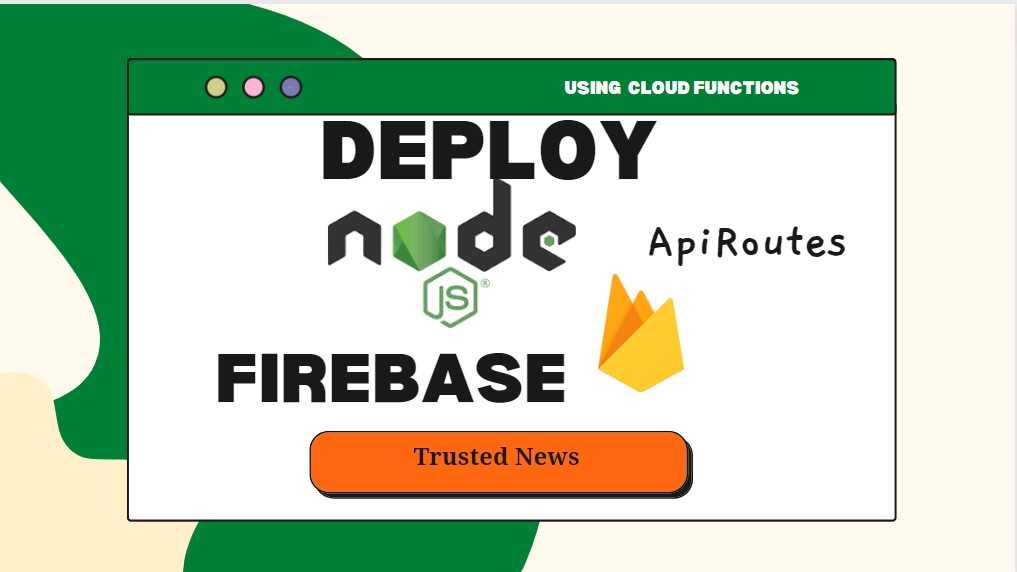Introduction to Node.js API
Node.js is a JavaScript runtime environment used to build and deploy applications. It enables developers to write code in one language and deploy it on multiple platforms. Node.js APIs are used to expose functionality to other applications and services. They provide a way to access data and services from an application, such as a web or mobile app.
What is Firebase?
Firebase is a popular cloud-based platform for building, deploying, and managing web and mobile applications. It is a comprehensive set of tools and services that enable developers to quickly build and deploy applications with minimal setup and maintenance.
Firebase provides a wide range of features and services, such as real-time database storage, authentication, analytics, hosting, and more. It also provides an easy-to-use platform for deploying Node.js APIs.
Benefits of Deploying Node.js API in Firebase
Deploying Node.js APIs in Firebase can be beneficial for many reasons. Here are some of the key advantages of deploying Node.js API in Firebase for free:
- Cost-Effectiveness: Firebase is free to use, meaning that developers don’t have to pay for hosting or infrastructure costs. This makes it an ideal platform for developing and deploying Node.js APIs.
- Scalability: Firebase’s managed infrastructure makes it easy to scale an application as needed. This is especially beneficial when deploying an API as it can be quickly scaled to accommodate increased traffic.
- Security: Firebase provides robust security features to protect applications and their data. This is especially important when deploying an API, as it can be exposed to malicious actors. Firebase’s security features help protect against potential threats.
- Performance: Firebase is designed to provide high performance and reliability. This is especially important when deploying an API, as performance can have a significant impact on the success of the API.
Step-by-Step Guide to Deploying Node.js API in Firebase
Once the required setup is complete, developers can deploy the Node.js API in Firebase. Here’s a step-by-step guide to deploying a Node.js API in Firebase:
- Create a Firebase project: In the Firebase Console, click the “Create a project” button and enter the required details.
- Create a Node.js API: Use the Express.js framework to create the API and test it locally.
- Configure the API for deployment: Configure the required environment variables, such as the API’s URL and authentication credentials.
- Install the Firebase CLI: Install the Firebase CLI on your local machine to deploy the API.
Preparing to Deploy Node.js API in Firebase
Before deploying a Node.js API in Firebase, there are several steps that need to be taken. This includes setting up Firebase, creating a Node.js API, and configuring the API for deployment.
You must enable Blaze plan for your project in firebase console. Because cloud functions are available only for blaze plan pay as you go. But don’t worry it offers 20,00,000 function invocation its enough for small node js api.
At the same time you be aware with CPU seconds and GB seconds in firebase because those are not free.
After successful development of node js api in your local computer. We have to do some changes because firebase call a function only using cloud functions.
Run the command Firebase init functions. It will create a folder called functions with firebase defaults setting or preferred settings.
Copy all of your existing project files in to functions folder.
NOTE: Don’t copy node modules, package.json and package-lock.json files, Instead of just copy only dependencies name from package.json files and paste into existing package.json file with in the functions folder.
Now run the command npm install. Otherwise, if you are using yarn use yarn install command
Note: Don’t use PORT name in your environmental variables, because port and some other variables are reserved for firebase.
The important step to change your main file like app.js or server.js what ever you file name to index.js. because firebase runs only index.js file.
exports.api = functions.https.onRequest(app)
copy the above line and paste at the bottom of the index.js file.
And finally run the command npm run serve to check the api in local environment. If works normally then deploy your app using npm run deploy command.
- Take advantage of Firebase’s security features. This will help protect the API from potential threats.
- Monitor the API’s performance and usage. This will help identify any issues and ensure that the API is meeting its performance goals.
Troubleshooting Common Issues with Deploying Node.js API in Firebase
Deploying a Node.js API in Firebase can be challenging, and it can be difficult to troubleshoot any issues that arise. Here are some common issues that may arise when deploying a Node.js API in Firebase, and how to troubleshoot them:
- API not working as expected: Make sure to test the API locally before deploying it. If the API is not working as expected after deployment, check the API’s configuration and environment variables to make sure they are correct.
- API not scaling correctly: Make sure to take advantage of Firebase’s managed infrastructure to ensure that the API is scaled appropriately.
- API not secure: Make sure to take advantage of Firebase’s security features to help protect the API from potential threats. Also, configure the API’s authentication credentials correctly.
- API not performing as expected: Monitor the API’s performance and usage to identify any issues and ensure that the API is meeting its performance goals.
Conclusion
Deploying Node.js APIs in Firebase is a great way to take advantage of the platform’s features and services. It is cost-effective, scalable, secure, and high-performing. Deployment of Node.js APIs in Firebase is a complex process, but with the right tips and tricks, it can be made easier.
If you are looking to deploy a Node.js API in Firebase, then make sure to follow the steps outlined in this blog article. With the right preparation and an understanding of the process, you can successfully deploy your Node.js API in Firebase for free!

Wow,nice explanation